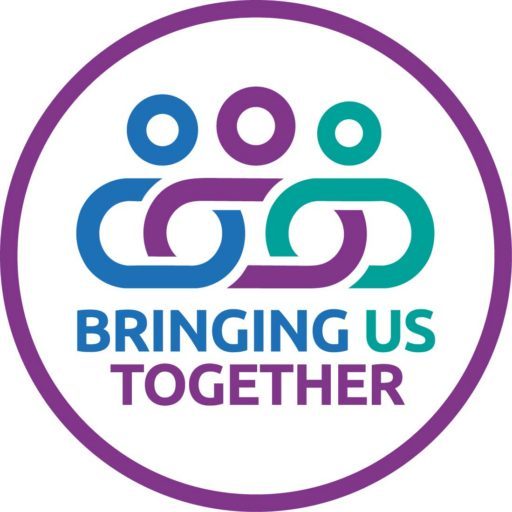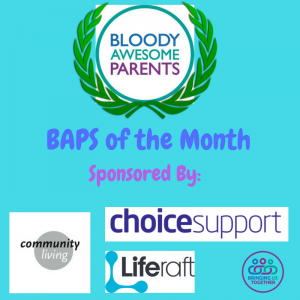What’s Important For your child and how to support this – #1PPin2015
Over the last few weeks, we have looked at What is a One Page Profile, how it can be used and how to complete the Appreciation and Important to sections. Today, we are going to help you to produce the final section of a One Page Profile – the “How to best support” our child. To do this, we have to look at what is “Important for” our child or young person.
 Important For
Important For
As we said last week, many people get confused between important to and important for.
Important for = things that keep them healthy, safe, valued and having the opportunities to learn or work.
Important to = things that make your child or young person happy, e.g. ipad game, chocolate, going bowling, etc.
When we look at what is Important For, this should only include things that are relevant to the person at that time, rather than general things that may be important for anyone to be healthy and safe or valued. For example some people enjoy exercising so this won’t need listing under what’s important for them. However, someone else may struggle to do enough/any exercise in order to keep them healthy, so in this situation it would be useful to have something about exercise recorded as Important For them.
So what sort of things do you put in this section?
This is where you look at how you balance what is important to and what is important for your child or young person.
No one can have everything that is important to them all the time (especially if that is something that makes us unhealthy or unsafe, e.g chocolate or McDonalds) but there are very few people who do what’s good for them to stay healthy and safe all the time. So yes, having chocolate is important to your child but having it limited is important for them.
This section is all about how other people can support your child or young person, e.g. if your child arrives at school and has left an item at home but having everything at school is important to them, then it is important for them that the staff support your child and let them contact you to have it dropped off.
One example we used personally was that it was important to my daughter to have girl friends but due to her SEN and the dynamics at home, she found it difficult to know how to socialise or make friends. It was Important For her that she felt valued and had the same opportunities as her peers to learn this skill. We chatted with the school about how they could best support her as this was something outside of our control. The school were very supportive and set up a girls’ group once a week where she has the chance to mix with her peers, do some typical girly activities, learn new games that can be played outside the club and the end result is she gets to have girl friends and her social and emotional well-being are better.
Questions and Points to consider when looking at this section:
The information in this section includes what people need to know, and what people need to do.
When you know what is Important to and important for your child or young person, think about how you or others can best support them. For example, if it is important to your child to have some time on their ipad or Playstation when they return home from school, the important for part of this is how do you ensure they are not on it all night and as a consequence have problems sleeping?
- What makes your child feel better when they are stressed or unhappy?
- What do you do at home to ensure they are not on their PC all night?
- What do you do to ensure that healthy foods pass their lips on occasion?
- Is this the same in other settings, e.g. school?
Who else do you ask?
Obviously, first and foremost, you ask your child. Then, ask people who meet your child or young person in a different environment, e.g. school or short break provider. What do they do to support your child in school or during an activity?
How do you ask them?
Again, you can send them a postcard asking them to list the things they do to support your child (explaining that this means how do they keep them safe, healthy, valued or having opportunities to learn or work). Send them a text. Use Facebook messenger. Give them a call. You will probably now how best to approach different people.
What doesn’t go in here?
This isn’t about the things that are important to them. This is how you best support what is important to them.
How can you support your child or young person when completing this section?
- Explain what you are doing and why;
- show them the post card or text message you are thinking of sending;
- discuss who you will be sending it to and constantly check throughout that they are happy for you to do this.
- explain what you will do with the answers and how these will form part of the One Page Profile, and most importantly,
- explain again what the One Page Profile will be used for.
- Let them see the responses and constantly check they are happy with anything that is written on their One Page Profile.
- Ask them what works for them, sometimes we do things automatically and don’t consider it as being supportive, but it may really stand out for them as something that supports their needs at that time.
What do you put in the final version?
Be as detailed as you can be.
Examples
• Anna is naturally quiet and can seem like she is ‘no trouble’, she needs gentle questions to draw her out.
• James struggles to ask people to work in pairs with him. It helps him if you suggest people for him to work with and use other ways to pair children up.
• Joe finds circle time very difficult. It is easier for him if he is sitting near the front and has an opportunity to say something early on.
Remember:
- This One Page Profile is about your child or young person.
- This One Page Profile should tell someone who has never met your child about them as they are now. If a new teacher walked into the classroom tomorrow and read the One Page Profile, would it really tell them about your child now?
Resources:
A big thanks to Beth Sheldrake at Helen Sanderson Associates who has produced all the short videos for these posts.
If you are looking for a template to use, there are many sites out there offering examples or free downloads. One of the most popular, offering the biggest selection, is Sheff Kids.
If you would like to look at other people’s One Page Profiles to get some more ideas and inspiration, then pop over to the One Page Profiles site where there are 100 examples of one page profiles and stories. The stories provided are a real mix of profiles including children, young people and practitioners.
Don’t forget to subscribe so you don’t miss the next instalment of our campaign
Next week, we will be giving tips on how you can get your One Page Profile into school, something many families consider to be a barrier.
Questions?
If you have any questions, there are many ways to contact us. Either use our Q&A section, email us “site@bringingustogether.org.uk”, leave a comment below or join our Facebook group.
Mum to three great kids, each with a different SEN.
Transplanted from the NW to the SE.
Co-founder and Director of Bringing Us Together










Brilliant post, will be sharing. We’ve used a one page profile or ‘passport’ for a few years now, but it’s always good to see new examples and ideas. Thanks!
Thanks Steph, is there anything we’ve missed, any FAQ that familues have asked you?